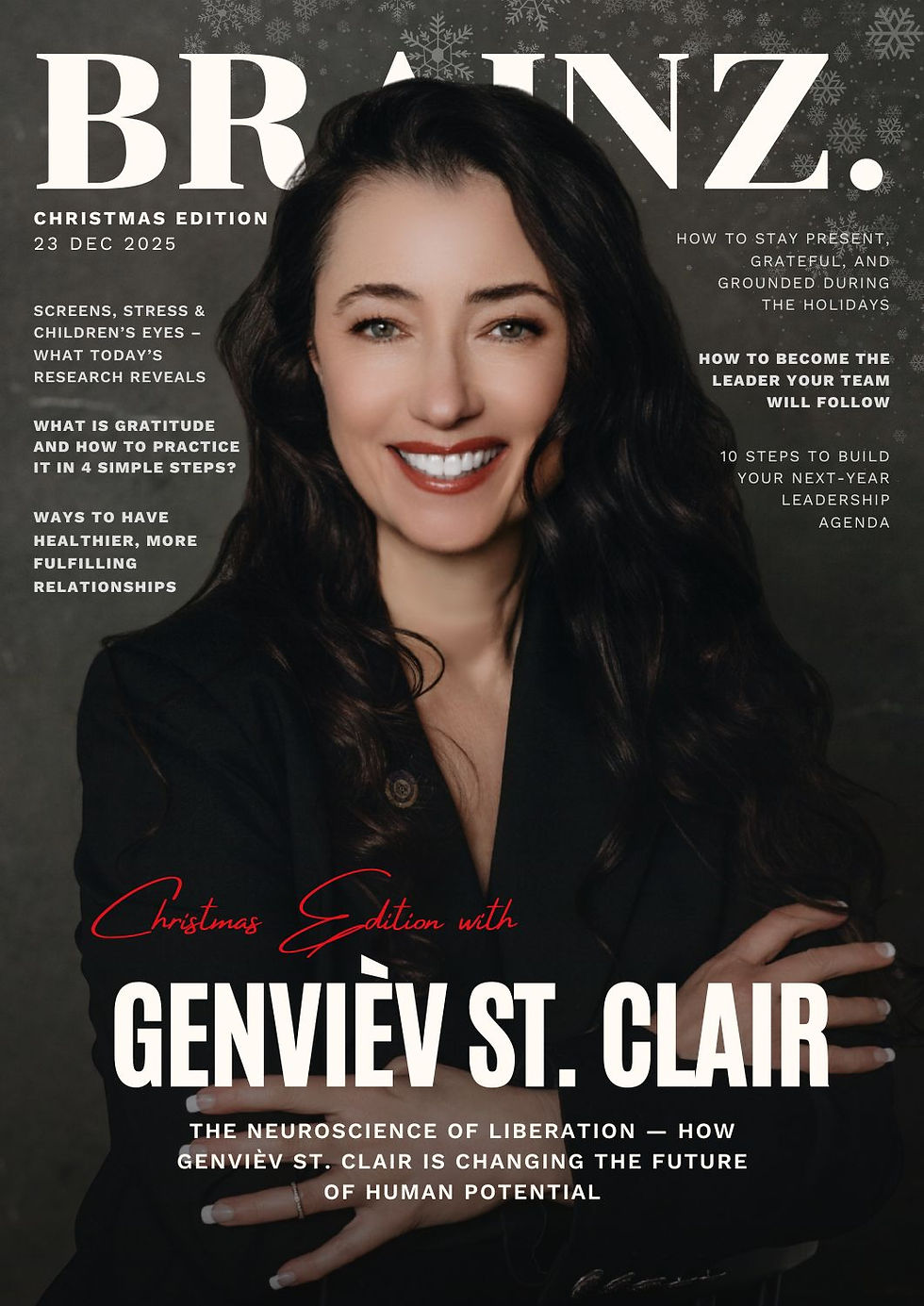How a 200-Person Digital Marketing Firm Saved $4.8 Million Annually by Transforming Meeting Culture
- Brainz Magazine

- Jun 4
- 5 min read
Marie Genevieve Pawlak is the founder of Prime Alchemy, a leading expert in game-based learning and organizational health, which provides people with the tools they need to find value and purpose in their work. The Prime Alchemy team works to develop programs that really engage people.

When the leadership team at Digital Momentum Agency (pseudonym) calculated that their 200 employees were spending a collective 8,000 hours monthly in meetings, they knew they had a crisis on their hands. What they discovered next was even more alarming: those meetings were largely unproductive, unfocused, and draining the creative energy from their talented team.

Within three months of implementing a systematic approach called the "Murder by Meeting" strategy, the agency transformed its meeting culture entirely, saving 40 hours per employee monthly and generating $4.8 million in annual productivity gains, plus an additional 15% revenue growth from strategic initiatives that became possible with their reclaimed time.
The meeting epidemic
Like many growing companies, Digital Momentum had fallen into a common trap. Each employee attended 40-50 meetings monthly, roughly 10-12 per week, resulting in a staggering 500+ organizational meetings per month. The numbers alone were overwhelming, but the qualitative impact was even worse.
"The biggest challenge we faced was that meetings had become overwhelmingly frequent but lacked clear outcomes," explains their Chief Operating Officer. "People felt their time wasn't being respected, sessions would drag on without resolution or actionable next steps.
Attendance was often high, but engagement was noticeably low."
The most problematic meetings were internal project reviews and team status updates, which regularly devolved into drawn-out discussions with repetitive information and little clarity.
All-hands meetings suffered from being too broad, making it difficult to engage everyone effectively. Interestingly, client calls remained productive because they had clear objectives, defined roles, and direct accountability, a crucial insight that would inform the solution.
The murder by meeting strategy
The transformation began when Marie Genevieve Pawlak, CEO of Prime Alchemy Group and certified facilitator of Patrick Lencioni's Working Genius model, was referred to Digital Momentum through a former employee connection. Her "Murder by Meeting" program
addresses the root causes of meeting dysfunction through systematic restructuring based on cognitive strengths and visual collaboration techniques.
The Working Genius Foundation
The strategy's cornerstone is ensuring the right people lead the right conversations based on their Working Genius strengths, rather than defaulting to hierarchical titles. For strategic discussions, individuals strong in Invention (I), Wonder (W), and Discernment (D) take the lead. When moving into planning phases, leadership shifts to those with Discernment (D), Galvanizing (G), and Enablement (E) strengths. For action-oriented sessions, Enablement (E) and Tenacity (T) leaders drive the discussion.
"This creates clearer guidance, motivation, and better follow-through," notes the COO. "Instead of a title leading the discussion, a skill set makes the meeting better."
Visual collaboration techniques
The program incorporates several powerful methods to increase engagement and effectiveness:
Working alone together: Participants first write their thoughts silently, then the group votes collectively on priorities. This dramatically reduces redundant discussions and surfaces genuine challenges quickly.
Visual problem solving: Teams collaboratively draw difficult issues instead of debating verbally, stimulating fresh perspectives and innovative solutions.
"How might we" questions: This positive, solution-oriented framing helps teams address challenges collectively rather than getting bogged down in complaints.
DAM close-out: Every meeting ends with explicit clarity on three elements: Decision (what was decided), Action (next steps with accountability), and Message (aligned communication for stakeholders). ( DAM Created by Jeff Crain)
The transformation in action
Project reviews reimagined
Previously, chaotic project reviews became highly structured sessions. Leadership roles were assigned based on Working Genius strengths rather than titles. The Working Alone Together technique eliminated repetitive discussions, while visual problem-solving exercises generated innovative solutions to complex challenges. Most importantly, every session concluded with clear DAM outcomes.
All-hands meetings revitalized
These broad organizational meetings were restructured with intentional leadership from individuals strong in strategic thinking (I, W, D). Interactive segments replaced passive information-sharing, incorporating visual problem-solving exercises and voting activities that kept people engaged. "How Might We" sessions fostered a solution-oriented culture, and every meeting ended with crystal-clear DAM messaging.
Measurable results
The transformation delivered remarkable, quantifiable outcomes:
Time savings: Each employee reclaimed 40 hours monthly, a 50% reduction in meeting time, totaling 8,000 hours saved across the organization monthly.
Financial impact: At an average fully loaded salary cost of $50 per hour, this translates to
$400,000 per month in productivity savings, or $4.8 million annually.
Revenue growth: The reclaimed hours enabled 15% additional revenue through strategic initiatives and billable work that had previously been unable to be prioritized.
Qualitative improvements: Employee satisfaction increased dramatically, decision-making accelerated, and follow-through on action items improved significantly.
The human impact
The numbers tell only part of the story. The cultural transformation was equally profound, as captured in employee testimonials:
"Before, our meetings felt like quicksand; no matter how hard we tried, we just kept sinking," shares Alex, VP of Creative Strategy. "After adopting the Murder by Meeting strategies, it feels like someone handed us a ladder. Suddenly, our meetings are crisp, focused, and full of energy. It's not just saving hours; it's giving our people back their creativity and enthusiasm for their work."
Senior Project Manager Jenna adds: "I finally feel heard and productive in meetings. Using visual discussions and structured methods like DAM means we're leaving every meeting knowing exactly what to do next, no more guessing or wasted time."
Key takeaways for leaders
Digital Momentum's transformation offers several critical insights for other organizations struggling with meeting overload:
Align leadership with strengths: Match meeting leadership roles to cognitive strengths rather than organizational hierarchy. Strategic sessions need different leadership than planning or action-oriented meetings.
Embrace visual collaboration: Moving beyond verbal discussions to visual problem-solving unlocks creative thinking and accelerates understanding of complex issues.
Structure input systematically: The Working Alone Together approach ensures all voices are heard while eliminating redundant discussions and surfacing priority issues quickly.
End with absolute clarity: The DAM framework (Decision, Action, Message) transforms meetings from discussion forums into decision-making and action-generating engines.
Measure and monitor: Track both quantitative metrics (time spent, follow-through rates) and qualitative outcomes (engagement, satisfaction) to ensure sustainable change.
The implementation reality
While the Murder by Meeting strategies can be implemented quickly, sustaining the transformation requires consistent practice and reinforcement. Digital Momentum's three-month implementation timeline enabled a gradual adoption, coaching, and culture development process. The key was a leadership commitment and the systematic application of the frameworks, rather than sporadic attempts at improvement.
The agency's success demonstrates that meeting dysfunction isn't inevitable; it's a solvable problem that responds to systematic intervention. When organizations apply cognitive science principles, visual collaboration techniques, and structured closure methods, they can transform their meeting culture from a productivity drain into a competitive advantage.
For organizations drowning in unproductive meetings, Digital Momentum's story offers hope: with the right strategy and commitment to change, it's possible to reclaim employees ' time, creativity, and enthusiasm while driving significant business results. The question isn't whether transformation is possible, it's whether leaders are ready to make the necessary changes to achieve it.
Marie Genevieve Pawlak, Managing Principal Prime Alchemist
Marie Genevieve Pawlak is the founder of Prime Alchemy, a leading expert in game-based learning and organizational health, which provides people with the tools they need to find value and purpose in their work. The Prime Alchemy team works to develop programs that really engage people through play. Game-based programs use your own tasks and projects, so you never get behind schedule. Marie believes in organizational health as a way to build a better workplace. Healthy organizations outperform their competitors, are free of politics, have higher transparency, and encourage star performers to stay. Prime Alchemy is a division of Planning101 Group Corp.










.jpg)